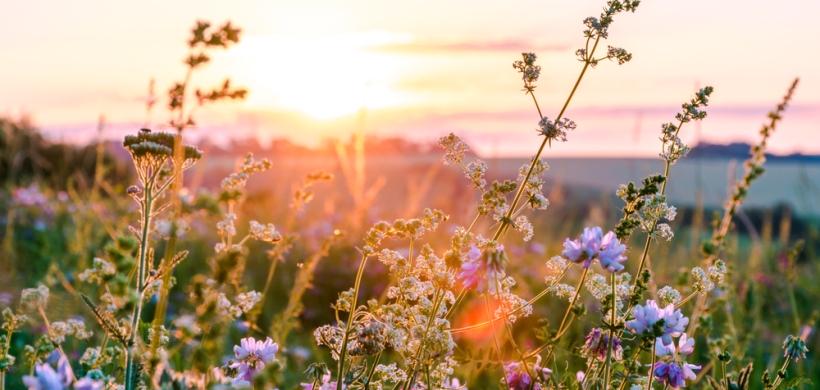Image: Shutterstock / Artur Sniezhyn
Do you love the sight of colourful wildflowers and the thought of supporting wildlife?
Planting wildflowers in England is a rewarding activity that not only improves the look of your garden but also supports local wildlife. Here's a simple guide on how to get started.
Why wildflowers?
Wildflowers are not just pretty to look at; they play a crucial role in our ecosystem. They provide essential food and habitat for bees, butterflies, and other pollinators, which are vital for our food supply and the health of our environment. Plus, wildflowers are quite durable and can thrive in the UK climate with minimal fuss and management.
1. Choosing your wildflowers
The first step is to choose the right wildflowers for your garden. It's important to pick species that are native to England, as they will be most beneficial to local wildlife and best adapted to the climate. Some popular choices include:
- Cornflower
- Poppy
- Oxeye Daisy
- Red Campion
- Wild Carrot
You can find these seeds at local garden centres or online. Some organisations even give away free wildflower seeds to encourage biodiversity.
2. Preparing the site
Wildflowers do best in open, sunny spots with well-drained soil. If you're planting in a garden bed, remove any weeds and grass to give your wildflowers the best start. Wildflowers prefer soil that isn't too rich, so there's no need to add compost or fertiliser. In fact, doing so could encourage more weeds than wildflowers!
3. Sowing the seeds
The best time to sow wildflower seeds is in spring (March to May) or autumn (September to November). This timing helps ensure that the seeds benefit from the rain and cooler temperatures to germinate and establish roots before the more extreme weather (be it hot summer or cold winter) sets in.
Scatter the Seeds: Mix your wildflower seeds with dry sand to help spread them more evenly. This makes it easier to see where you've sown them on the soil. Scatter the mix over the prepared soil, aiming for a light, even coverage.
Press, Don't Bury: Wildflower seeds need light to germinate, so don't bury them under the soil. Instead, gently press them into the surface to ensure they make good contact with the earth.
Water Gently: If there's no rain forecasted, lightly water the area with a fine spray. Keep the soil moist (but not waterlogged) until the seeds germinate and start to grow.
4. Aftercare
Wildflowers are pretty low-maintenance, but a little care can help them thrive:
- Keep the area free of weeds, especially in the early stages.
- Water during long dry spells of weather.
- Once flowering finishes, you can cut the plants back but leave the cuttings on the ground for a few days so any seeds can fall and reseed the area for next year.
5. Enjoy your wildflowers!
Before you know it, your wildflowers will be blooming, providing a splash of colour and a busy habitat for bees and butterflies. You'll have helped contribute to the health of our planet and be able to enjoy the simple beauty of wildflowers.
Remember, planting wildflowers is not just about creating a beautiful space, it's about supporting the local ecosystem and providing vital resources for wildlife. If you would like more tips on how to live in a more sustainable way, visit our green advice section.
Did you know? We replace every tree we must remove for development purpose by planting two more. Learn more about sustainability at LiveWest.
